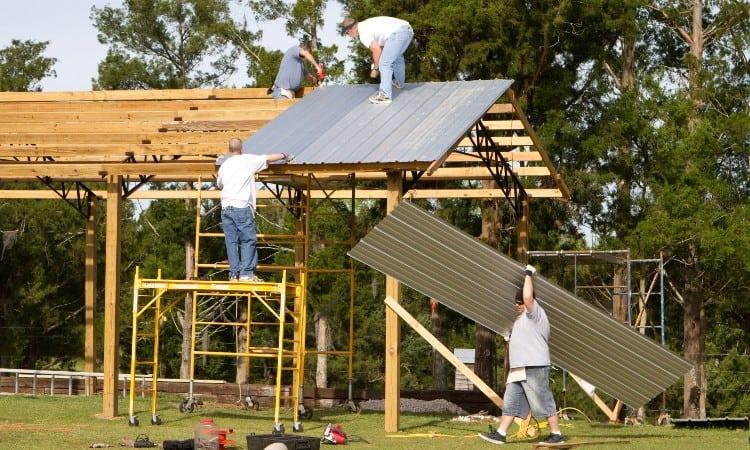When it comes to selecting the perfect roofing material for your home or building, metal roofs have gained immense popularity due to their durability, longevity, and energy efficiency. However, to ensure your metal roof serves you well, understanding the appropriate pitch is essential. In this article, we’ll explore the critical question: “How Much Pitch Do You Need For a Metal Roof?” We’ll discuss the factors that influence pitch selection and help you make an informed decision for your project.

Understanding Roof Pitch
Before we delve into the specifics of how much pitch you need for a metal roof, let’s clarify what roof pitch actually is.
What is Roof Pitch?
Roof pitch, also known as roof slope, refers to the steepness or incline of a roof. It’s typically measured as the ratio of vertical rise to horizontal run, expressed as a fraction. For example, a roof with a 6:12 pitch means the roof rises 6 inches for every 12 inches of horizontal distance.
Factors Influencing Metal Roof Pitch
The ideal pitch for your metal roof depends on several key factors, and understanding these factors is crucial for making an informed decision.
1. Climate:
- Climate plays a significant role in determining the appropriate roof pitch. In areas with heavy snowfall or rainfall, steeper pitches (higher ratios) are necessary to allow for efficient water or snow runoff. Conversely, regions with milder climates may require lower pitches.
2. Aesthetics:
- The architectural style and visual preferences for your building may influence your pitch choice. Some designs look better with steeper or shallower roofs, and this can impact your decision.
3. Building Codes:
- Local building codes and regulations may have specific requirements regarding roof pitch. It’s essential to comply with these standards to ensure the safety and legality of your project.
4. Material and Type:
- The type of metal roofing material you choose can also affect the required pitch. Some materials are better suited to steeper pitches, while others can work well with lower slopes.
Metal Roof Pitch Options
Metal roofs are versatile and can accommodate various pitch ranges, making them suitable for a wide range of applications.
Low-Pitched Roofs:
- Roofs with pitches as low as 2:12 are considered low-pitched. These are common for residential and commercial buildings where a flatter, modern aesthetic is desired. However, adequate waterproofing and drainage systems are crucial for low-pitched roofs.
Medium-Pitched Roofs:
- Roof pitches in the 4:12 to 6:12 range are considered medium-pitched. These are versatile and can work well in most climates and applications.
High-Pitched Roofs:
- High-pitched roofs, often with pitches of 8:12 or steeper, are common in regions with heavy snowfall or rain. They efficiently shed precipitation, reducing the risk of leaks or structural damage.
Making the Right Decision
Selecting the appropriate pitch for your metal roof is a decision that should not be taken lightly. Here are some steps to help you make the right choice:
1. Consult with a Professional:
- Engage with a roofing professional or architect who can assess your specific needs, local regulations, and design preferences.
2. Evaluate Your Climate:
- Consider the weather conditions in your area, especially the amount of precipitation, to determine the necessary pitch for efficient water runoff.
3. Review Aesthetics:
- Think about the architectural style of your building and how the roof pitch will affect its overall look.
4. Check Local Codes:
- Ensure that you are aware of and comply with local building codes and regulations regarding roof pitch.
Conclusion
Determining the appropriate pitch for your metal roof is a crucial step in the construction or renovation of your home or building. It affects not only the functionality and durability of your roof but also its appearance. By considering factors such as climate, aesthetics, building codes, and the type of metal roofing material, you can make an informed decision that ensures your metal roof serves you well for years to come.



Leave a Reply